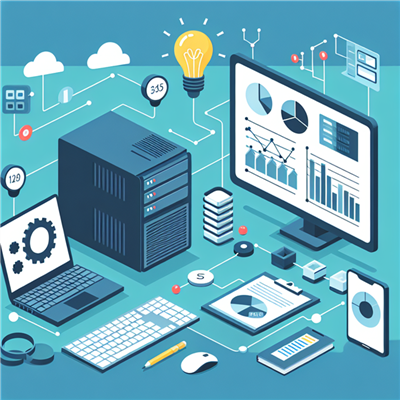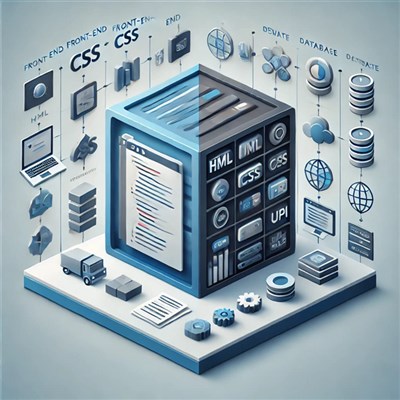
As the world grows more interconnected and technologically advanced, embedded systems have become a fundamental part of many industries, from automotive and aerospace to medical devices and consumer electronics. Embedded systems are specialized computing systems that perform dedicated functions within larger devices, and they require unique skills and knowledge for effective design and deployment.
Enrolling in an embedded systems course can provide students with essential skills to thrive in this domain. Whether you’re an aspiring engineer, developer, or IT professional, understanding the skills you’ll gain from an embedded systems course can be valuable in deciding your career path. Here’s a breakdown of some of the most crucial skills taught in these courses:
Skills You’ll Gain from an Embedded Systems Course
1. Hardware-Software Integration
At the heart of embedded systems is the seamless integration between hardware and software. Unlike traditional computing, embedded systems often require low-level control of hardware resources to ensure that the device functions as intended. An embedded systems course covers:
- Interfacing hardware with software: Students learn how to connect and control hardware components such as sensors, actuators, and displays through code.
- Protocols and communication interfaces: Key communication protocols such as UART, SPI, I2C, and CAN are integral in embedded systems. Understanding these protocols is essential to enabling different components to communicate.
- Hands-on experience with hardware: Many courses provide students with practical experience through lab work or hands-on projects, which is invaluable for developing a real-world understanding of hardware-software interaction.
Why It’s Important:
Proficiency in hardware-software integration is essential because embedded systems need to run efficiently and reliably within specific hardware constraints. A strong understanding of this integration is key to developing responsive and optimized embedded devices.
2. Microcontroller and Microprocessor Programming
Microcontrollers (MCUs) and microprocessors are the core computing units in most embedded systems. Courses in embedded systems teach students how to program these devices to perform a range of tasks, from simple input/output control to complex signal processing.
Key Areas Covered:
- Programming Languages: Students typically learn to code in C and C++, which are the main languages used for embedded development due to their low-level access to memory and hardware. Some courses may also cover Assembly language for even finer control.
- Microcontroller Architecture: Understanding the architecture of microcontrollers—such as those from ARM, AVR, or PIC families—enables students to write efficient and effective code that leverages the unique features of each type of MCU.
- Peripheral Programming: Students learn to control various microcontroller peripherals like timers, counters, and analog-to-digital converters (ADCs) that expand the microcontroller’s functionality in embedded applications.
Why It’s Important:
Embedded developers need to work closely with hardware resources to ensure performance and reliability. Skills in microcontroller programming are crucial for manipulating hardware at a low level, which is necessary for creating highly optimized and responsive applications.
3. Real-Time Operating Systems (RTOS) and Scheduling
Real-time operating systems are critical in embedded applications that must adhere to strict timing requirements. Embedded systems courses introduce students to RTOS concepts and teach them how to manage time-sensitive tasks effectively.
Key Concepts:
- Task Scheduling: RTOS courses teach the concepts of scheduling, including preemptive and cooperative scheduling, which help ensure that critical tasks execute on time.
- Inter-Task Communication: Students learn how different tasks in an embedded system communicate and share resources, using mechanisms such as semaphores, queues, and mutexes to prevent conflicts.
- Interrupts and Priority Management: Embedded courses cover interrupt handling, which allows the system to respond quickly to external events, making it possible to prioritize important tasks over less critical ones.
Why It’s Important:
RTOS skills are essential for applications like automotive and industrial systems, where timing and reliability are crucial. Understanding how to develop and manage real-time applications is highly valued in the embedded industry.
4. Power Management and Optimization
Power efficiency is a vital consideration in embedded systems, especially for battery-operated or portable devices. Embedded systems courses teach students how to optimize their designs for minimal power consumption without compromising performance.
Skills Taught:
- Power Saving Techniques: Students learn strategies like clock gating, sleep modes, and dynamic voltage scaling to reduce power usage.
- Hardware-Driven Optimization: Embedded developers need to optimize not only the code but also how it interacts with hardware components, as inefficient hardware usage can lead to higher power consumption.
- Data Sampling and Processing Optimization: Efficient data processing strategies are crucial in embedded systems to minimize resource usage. Courses cover methods such as buffering, data compression, and event-driven processing.
Why It’s Important:
Energy-efficient systems are essential for extending the lifespan of portable and embedded devices. Power management skills are especially important for industries like IoT, where devices often operate in remote or energy-constrained environments.
5. Debugging and Testing Techniques
Effective debugging and testing are indispensable in embedded systems, where issues can arise from complex interactions between hardware and software. Students in embedded systems courses gain hands-on experience in debugging and testing methodologies tailored for embedded applications.
Key Areas:
- Debugging Tools: Courses introduce students to debugging tools like in-circuit debuggers, oscilloscopes, logic analyzers, and simulators that allow them to observe and troubleshoot hardware and software issues.
- Testing Frameworks: Embedded systems courses also cover unit testing and integration testing, often using testing frameworks specifically designed for embedded applications.
- Fault Injection and Diagnostics: Students learn how to test the robustness of systems by simulating errors and understanding diagnostics to improve overall system resilience.
Why It’s Important:
Embedded systems must be reliable, as they’re often deployed in critical environments where failures can have serious consequences. Debugging and testing skills are essential for ensuring quality and safety in embedded applications.
6. Networking and Communication Protocols
Many embedded systems are part of a larger network of devices, requiring knowledge of networking and communication protocols. Courses often cover communication methods and network protocols to prepare students for these connected environments.
What You’ll Learn:
- Wired and Wireless Communication: From Ethernet and serial communication to wireless protocols like Wi-Fi, Zigbee, and Bluetooth, students learn the essentials of connecting embedded devices.
- IoT Protocols: Courses may introduce MQTT, CoAP, and other lightweight protocols commonly used in IoT applications.
- Security in Communication: With the increasing importance of cybersecurity, courses also cover securing communication channels to protect data integrity and prevent unauthorized access.
Why It’s Important:
As the demand for connected and IoT devices grows, understanding how to connect and communicate securely within networks is a valuable skill.
7. Embedded System Design and Architecture
Understanding the overall design and architecture of embedded systems is a crucial part of developing optimized and scalable solutions. Embedded systems courses teach students how to analyze and design systems tailored to specific needs.
Key Concepts:
- System Requirements Analysis: Students learn to assess the requirements of the system to design effective solutions.
- Embedded System Architecture: The course often covers single- and multi-core processors, memory management, and hardware acceleration techniques.
- Performance Optimization: Optimization techniques help maximize system efficiency within the constraints of the hardware.
Why It’s Important:
Designing embedded systems requires an in-depth understanding of both hardware and software components. This knowledge enables students to build efficient and scalable systems suited to specific applications.
Conclusion
An embedded systems course provides a well-rounded education that covers the integration of hardware and software, microcontroller programming, RTOS, power optimization, debugging, communication, and system design. These skills are critical for anyone interested in embedded technology careers. For individuals aspiring to work in sectors like IoT, automotive, medical devices, or industrial automation, gaining expertise in embedded systems can open doors to a range of exciting job opportunities in a growing industry.
Interested in learning more? Koenig Solutions, a leading IT training company, offers comprehensive embedded systems classes and embedded systems online training. Whether you are a beginner or an experienced professional, their courses are designed to fit your needs. Enroll today to kickstart your journey in the exciting world of embedded systems.







COMMENT